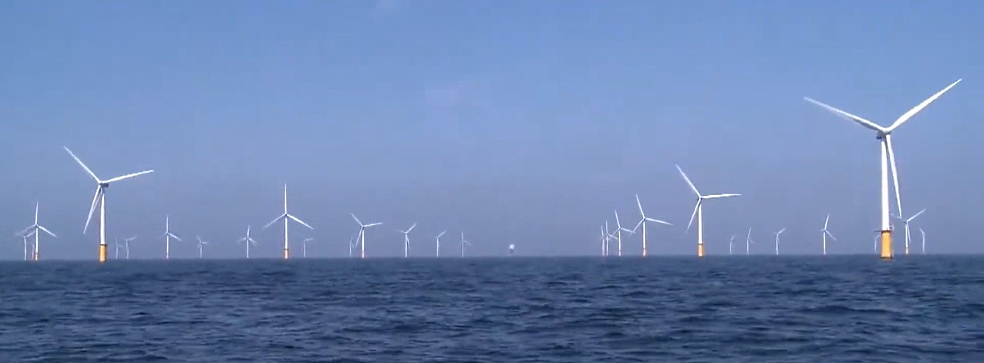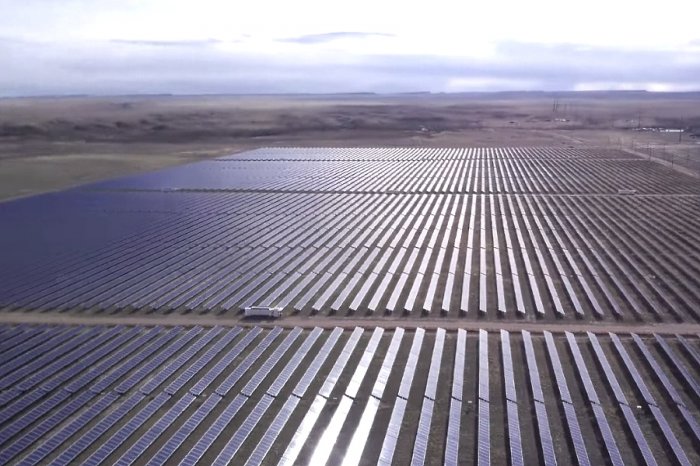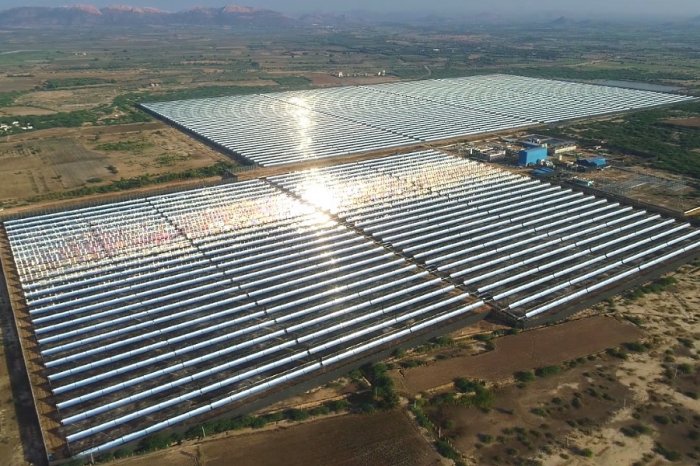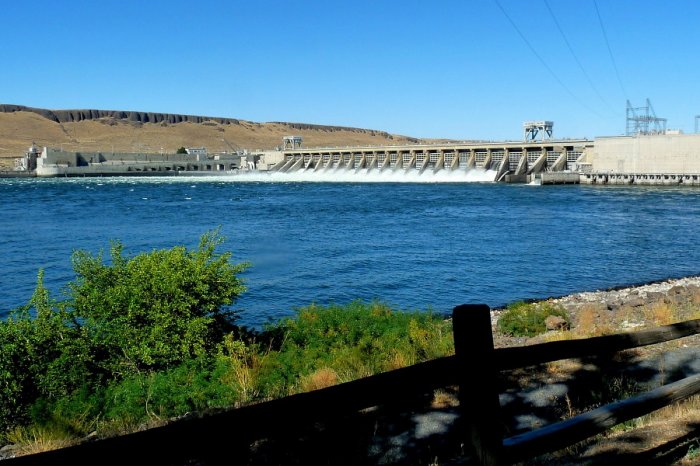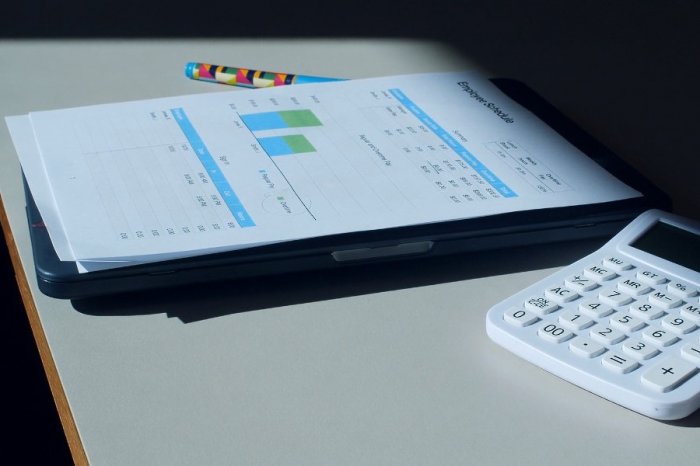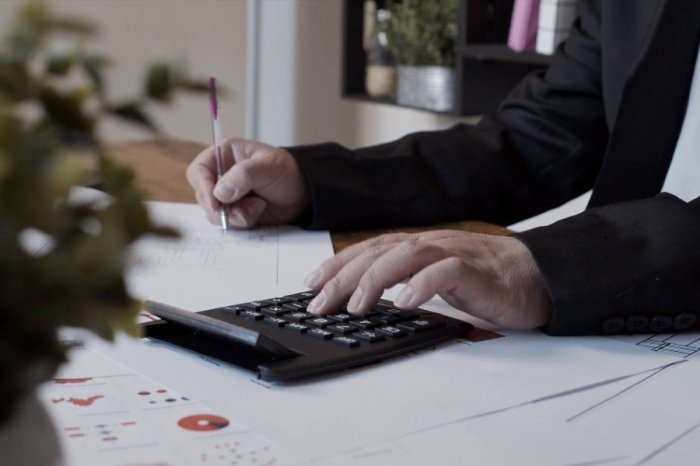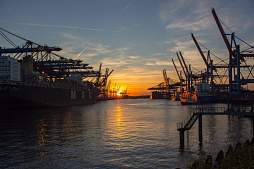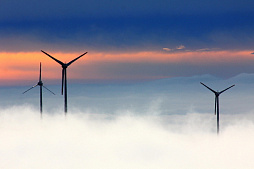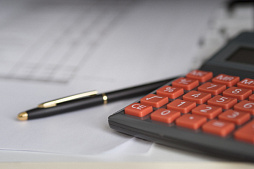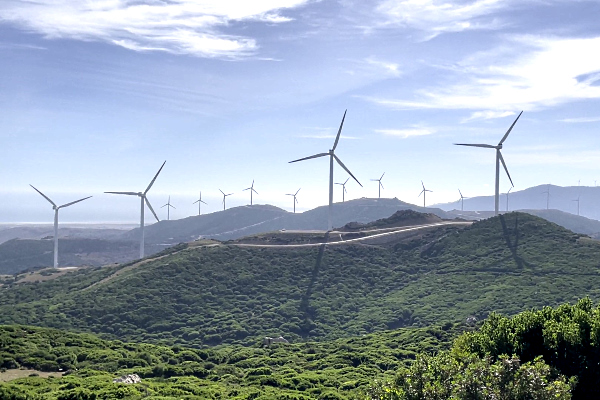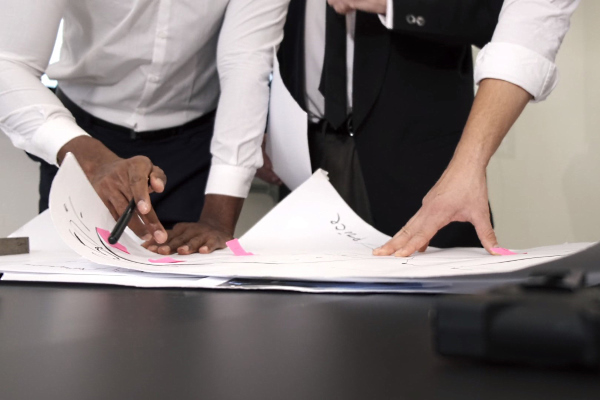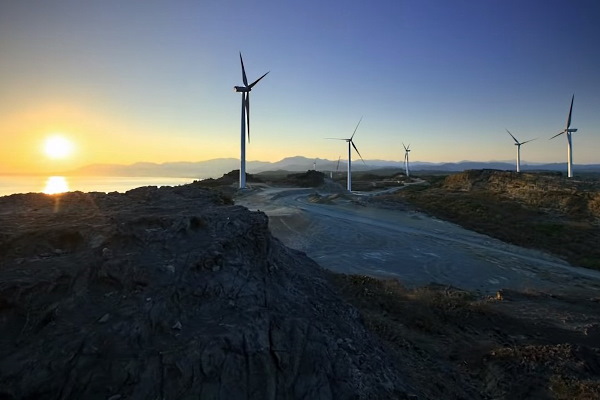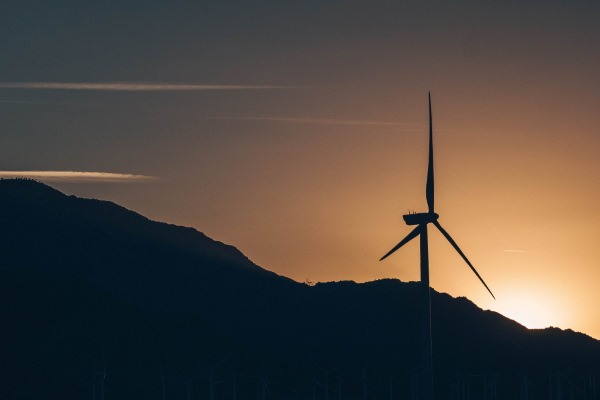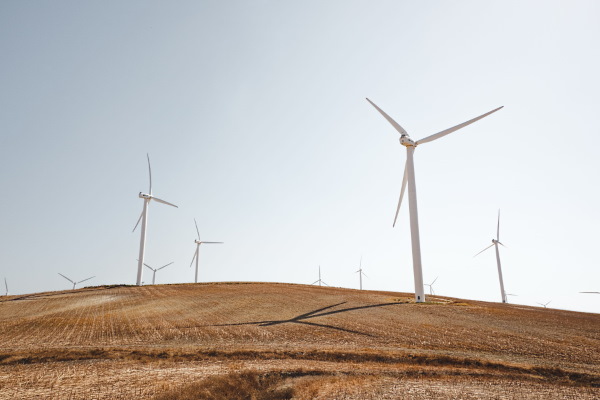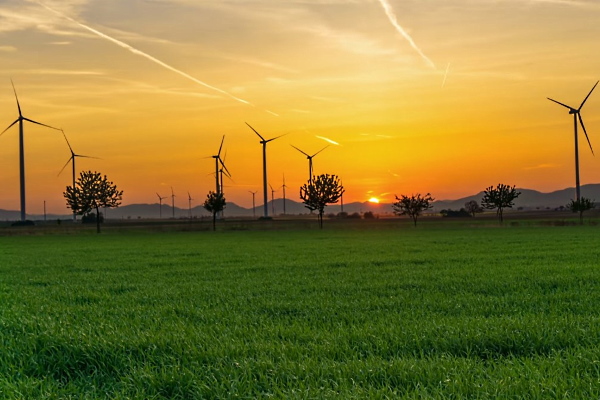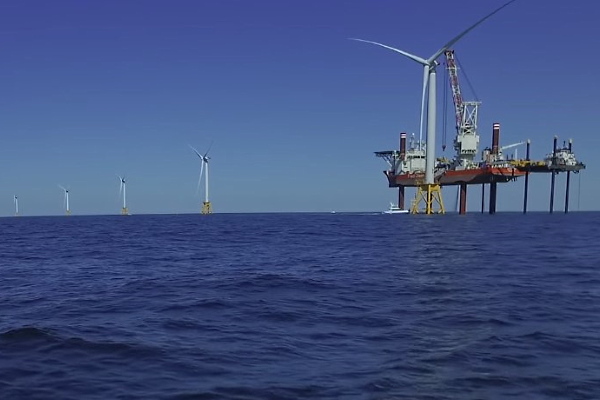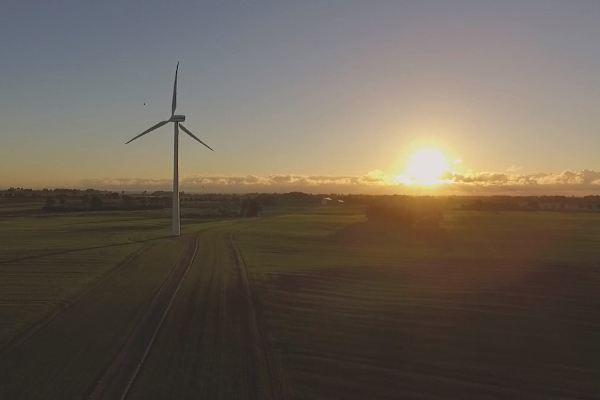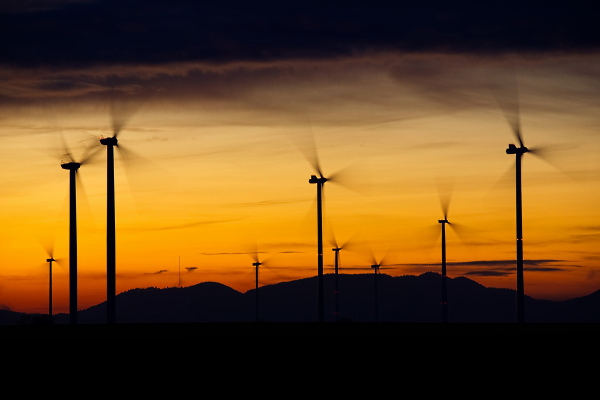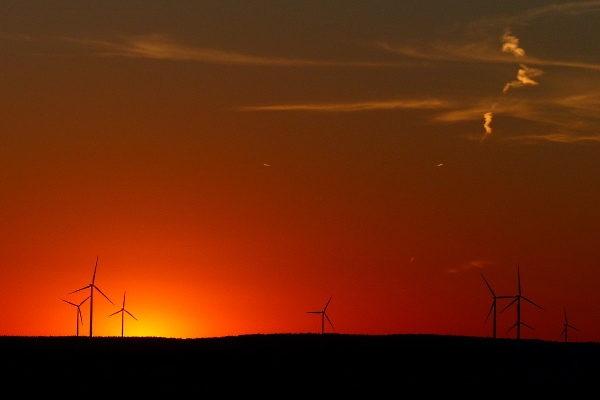To consider an application for financing, fill out the form and send it to us by e-mail along with the project brief, or contact our experts
The advantage of offshore wind power plants is a much higher capacity factor, because the wind is usually stronger at sea than on land.
Disadvantages are higher construction costs and expensive transmission infrastructure.
To understand the importance of building new offshore wind farms in the North Sea, let's turn to economic indicators and expert forecasts.
In last year's report, WindEurope predicted 450 GW of installed capacity in Europe by 2050.
In this case, offshore wind turbines will provide 30% of the European electricity demand.
Europe is now increasing its installed offshore wind capacity by 3 GW per year, with growth expected to accelerate to 7 GW per year in the second half of the next decade.
Experts emphasize that after 2030, to achieve the goal of 450 GW, the increase must be 20 GW per year.
The organization estimates that 85% of the target capacity (380 GW) will be installed in the North Sea, as well as in the Irish and Baltic Seas.
The reasons for this distribution are better wind conditions, proximity to consumers and supply chains in Northern Europe.
The report indicates that offshore wind power will require significant areas, and now the authorities should think about proper planning, building supply chains and schedules. From the end of the next decade, new offshore wind turbines will require 1,500 km² per year, and in the mid-2030s, as investments increase, this figure will increase to 4,500 km² per year.
LBFL, a company with an international presence, offers a full range of financing and construction services for offshore wind farms in the North Sea under an EPC contract.
We will answer all your questions and provide professional advice on any financial aspect of your project.
Largest offshore wind farms in the North Sea: capacity and construction cost
The cost of an offshore wind power plant, per megawatt of installed capacity, decreases as the project grows in size.Despite the fact that large offshore wind power plants require expensive engineering solutions and complex technologies, these projects are considered the most competitive.
The UK is building the largest wind farms in the North Sea to date.
Such projects include the London Array, and with the recently built 1.2 GW Hornsea Project One and the planned 3.6 GW Dogger Bank Wind Farm, the UK will remain the leader in the coming years.
The 12 largest operating wind power plants in the North Sea, capacity and construction cost (2020) *:
| Wind farm name | Year of commissioning | Installed capacity, MW | Construction cost | Country |
| Hornsea One | 2020 | 1200 | --- | Great Britain |
| London Array | 2013 | 630 | 2.5 billion euros | Great Britain |
| Gemini | 2017 | 600 | 2.6 billion euros | Netherlands |
| Gode Wind 1 & 2 | 2016 | 582 | 2.2 billion euros | Germany |
| Greater Gabbard | 2012 | 504 | 1.5 billion pounds | Great Britain |
| Dudgeon | 2017 | 402 | 1.5 billion pounds | Great Britain |
| Global Tech I | 2015 | 400 | --- | Germany |
| BARD Offshore 1 | 2013 | 400 | 2.9 billion euros | Germany |
| Thorntonbank | 2013 | 325 | 1.1 billion euros | Belgium |
| Sheringham Shoal | 2012 | 317 | 1.1 billion pounds | Great Britain |
| Borkum Riffgrund I | 2015 | 312 | 1.3 billion euros | Germany |
| Thanet | 2010 | 300 | 0.9 billion pounds | Great Britain |
* - the table contains wind power plants with an installed capacity of 300 MW and more.
Based on this information, the cost of wind farms in the North Sea averages 4-5 million euros per 1 MW of installed capacity.
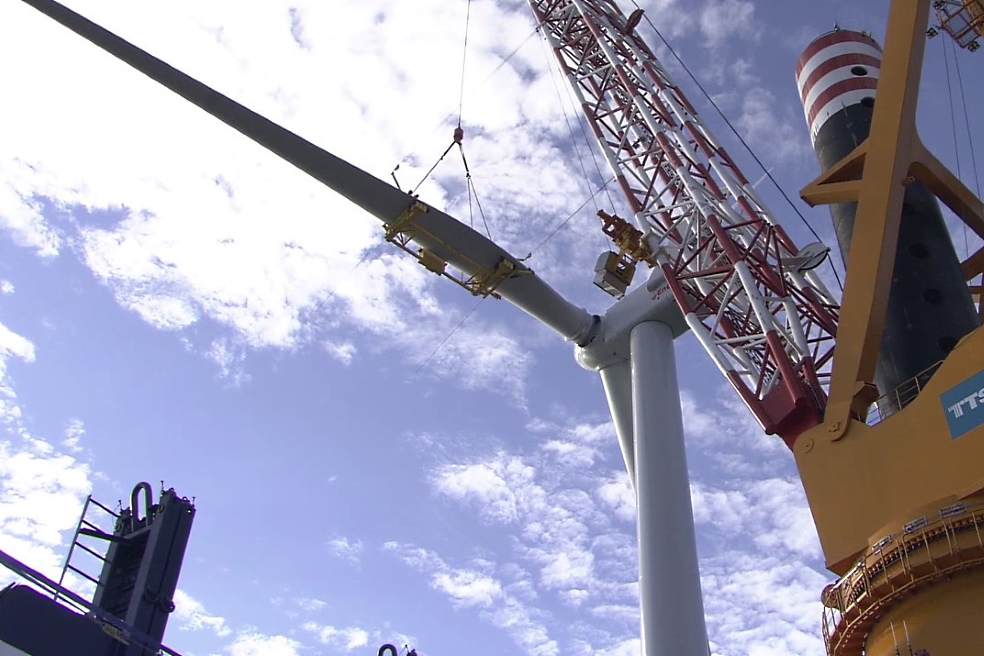
This figure can vary widely depending on the size of the project, distance from shore, equipment and technology used. It should also be borne in mind that the cost of construction and equipment tends to decrease in price every year.
We offer you to get acquainted with some technical characteristics, economic indicators and the history of the development of the largest wind energy projects in the region.
Hornsea Wind Farm
The Hornsea offshore wind power plant is already partially operating in the UK Exclusive Economic Zone in the North Sea.The project consists of four phases.
Hornsea Project One was built from January 2017 to October 2019. Its 174 wind turbines have a total installed capacity of 1,218 MW.
The second stage should have an installed capacity of 1,386 MW, so after commissioning in 2022, the power plant will become one of the largest in the world.
Hornsea Project One was developed and implemented by the Danish energy group Ørsted. The company received permission from the UK government in February 2015. The total cost of the project was supposed to be about 2.65 billion euros. In the fall of 2018, Ørsted sold 50% of the power plant under construction to Global Infrastructure Partners (GIP) for 5 billion euros.
This offshore power plant has 174 Siemens Gamesa SWT-7.0-154 wind turbines. Hornsea One covers an area of about 407 square kilometers and is located 120 km off the coast of England. From March 2017 to April 2018, the EEW plant in Rostock produced about 92 thousand tons of steel, which was required for the construction of this facility.
In January 2018, the first foundation was laid for Hornsea One. The installation was carried out in turn by two ships of the NG-9000C class.
The wind farm was fully commissioned in early 2020.
Hornsea Project Two is being built on an area of 480 square kilometers approximately 90 km off the coast of Yorkshire. The 165 Siemens Gamesa SG 8.0-167 DD wind turbines installed here will have a total capacity of 1,386 MW. Ørsted won the tender for the project.
The facility is expected to provide electricity to 1.6 million British households. The total investment is estimated at 7 billion euros. The guaranteed price for electricity, according to the terms of the tender, is 57.50 pounds per MWh - such a low tariff can be explained by the effect of large-scale energy production.
The wind turbines will be installed at a depth of 30 to 40 meters. Construction work on the site began in late summer 2019, and the installation of wind turbines is scheduled for 2022. From March 2020, the ships are laying the foundations for the towers.
Hornsea Project Three is larger than previous projects.
This offshore wind farm, with a total installed capacity of 2.4 GW, will supply renewable electricity to over 2 million UK households.
Construction work is scheduled for 2022-2025.
London Array Wind Farm
The London Array is an offshore wind power plant in the North Sea off the east coast of England.The development of the project began in 2001 and the final decision was made in November 2007.
In total, it was planned to install more than 340 wind turbines, which were planned to be installed within four years, bringing the installed capacity to almost 1 GW, but subsequently the project was stopped in the first phase.
The first phase of construction of 175 wind turbines with an installed capacity of 630 MW was completed in December 2012 and commissioned in April 2013.
At this point, the London Array was the largest offshore wind farm in the world.
The wind power plant is located off the coast of the English counties of Kent and Essex, covering an area of 245 square kilometers. Wind turbines Siemens SWT 3.6-120 were installed at a depth of 23 meters. These 3.6 MW turbines have a rotor diameter of 120 meters and a blade length of 87 meters with a total height of 147 meters.
The foundations for the wind turbines and two substations were built by Bilfinger Berger together with their Danish partner Per Arslev.
At two transformer substations, the voltage is increased from 33 kV to 150 kV in order to transmit electricity with minimal losses through the underwater power line to the above-ground substation.
During the construction process, 210 km of 33 kV cable and 220 km of 150 kV cable were laid.
According to investors, the total investment reached 2.2 billion pounds, that is, about 2.5 billion euros.
The maintenance of the wind turbines is carried out by Siemens.
Gemini Wind Farm
Gemini is a large offshore wind power plant in the Dutch Exclusive Economic Zone in the south of the North Sea.With a total installed capacity of 600 MW, this wind farm produces 2.6 billion kWh of electricity per year, which corresponds to the consumption of approximately 785,000 households. The construction cost was originally estimated at 2.8 billion euros, but in fact, the costs were slightly lower than this amount.
The owner of the power plant is a consortium of several companies led by the Canadian company Northland Power, which owns 60% of the shares and controls the operation of the facility.
Gemini covers an area of about 68 square kilometers and is located about 85 km north of the coast of the Groningen in the east of the Dutch EEZ in the North Sea. The average wind speed here reaches 10 m / s, which makes this place one of the most favorable off the coast of the Netherlands.
75 wind turbines are installed in each of the two phases, BuitenGaats and ZeeEnergie. These 150 Siemens SWT 4.0-130 wind turbines with a capacity of 4 MW, a rotor diameter of 130 meters and a blade length of 88.5 meters, stand at a depth of 25-36 meters.
Siemens was responsible for the installation and commissioning of wind turbines.
The wiring inside the wind farm is carried out using 33 kV cables. The substations increase this voltage to 220 kV to transfer electricity to the nearest ground substation in Eemshaven. Northland Power is responsible for maintenance and repairs in Eemshaven.
Construction work began in July 2015.
At the end of February 2016, the first wind turbine supplied power to the grid, but the official commissioning of Gemini Wind Farm took place in April 2017.
Dogger Bank: project of the world's largest offshore wind farm
In the North Sea near Yorkshire, the Dogger Bank will be built, the world's largest offshore wind farm, equipped with a unique 12 MW turbines.For transportation and installation of wind turbines, a special ship was designed, also the largest in this class.
The planned installed capacity of the wind power plant is 3.6 GW. The complex will consist of wind turbines with a capacity of 12 MW each. The contract for the transport and installation of these giants was signed with Jan De Nul, which will build the world's largest jack-up installation vessel for this project.
The wind towers will be located at Dogger Bank, about 130 kilometers off the coast of Yorkshire.
Construction work is planned to be completed in 2023.
The project will be implemented in three phases. Each stage involves the installation of wind turbines with a total capacity of 1.2 GW.
The investment is being made by a joint venture between SSE Renewables and Equinor. Upon completion, Dogger Bank will become the largest offshore wind power plant in the world, capable of meeting the needs of 4.5 million British households - about 5% of the United Kingdom's annual electricity consumption.
The jack-up vessel Voltaire, the largest ever used to install wind turbines, is scheduled to enter service in 2022.
The ship will be equipped with a Huisman crane with a lifting capacity of 3,000 tons with a platform length of more than 169 meters.
The world's largest 12 MW Haliade-X turbines will be supplied by General Electric. Their rotors have a diameter of 220 m and their blades are about 107 m long. The capacity factor, that is, the ratio of actually produced energy to the maximum possible, should be 63%, while a typical value for offshore wind turbines is 40-50%.
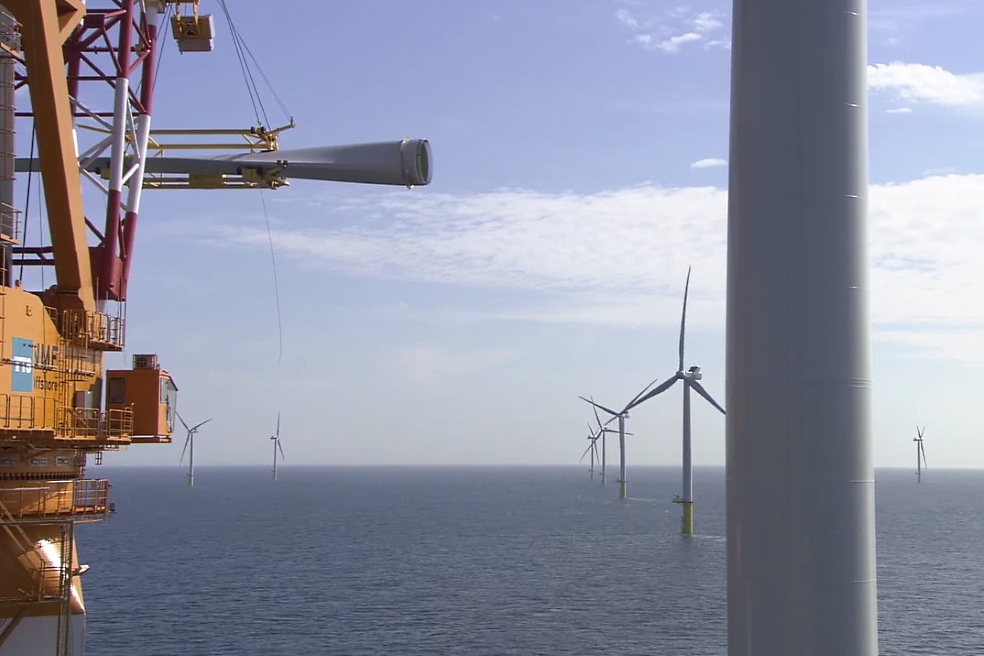
One turbine can produce up to 67 GWh of electricity per year, which is enough for 16,000 people. Each such turbine can potentially reduce the annual carbon dioxide emissions by 42 thousand tons, which corresponds to the emissions of 9,000 cars.
The wind turbines will be installed on monopile foundations.
Final investment decisions will be made at the end of this year.
The operation of the huge wind farm will last at least 25 years.
Hollandse Kust Zuid: new wind projects on the way
Despite the record numbers, the British megaproject described above is not the only one of its kind.Swedish energy company Vattenfall AB continues construction of one of the largest offshore wind farms in the world.
It is also the largest ever built without government support.
The 1,500 MW Hollandse Kust Zuid wind farm is located off the coast of the Netherlands and consists of two phases. This is an important signal that large-scale projects in the field of renewable energy sources can be implemented by private capital.
The facility should be commissioned in 2023.
The electricity produced by Hollandse Kust Zuid will satisfy the annual consumption of more than 2 million Dutch households.
Siemens Gamesa Renewable Energy SA will supply wind turbines for the project. Prysmian SpA and TKF will provide the cables and electrical equipment, while Subsea 7 SA is responsible for the foundation and installation of the submarine power lines.
Along with major German projects such as Borkum Riffgrund 3 (900 MW), He dreiht (900 MW) and Gennaker (865 MW), this will mark the transition of European wind energy to a new format.
Most companies today are looking to scale up their power generation to become more competitive.
Stages of construction and maintenance of offshore wind farms
The popularity of offshore wind farms is attributed to economic benefits.Due to the high wind speed on the high seas, wind turbines are more efficient than on land. When the wind speed doubles, the generator produces eight times more energy.
Large offshore wind farms are being planned in the Atlantic and Mediterranean Seas, as well as off the coasts of China and Vietnam. By the way, China is already ahead of Europe in the number of new wind turbines (Great Britain in second place, Germany in third).
Of the eleven countries in Europe with a total of 4,811 turbines and 106 offshore wind farms (mainly in the North and Baltic Seas), the UK has the largest installed capacity (8 GW).
It is followed by Germany (6.5 GW), Denmark (1.7 GW) and the Netherlands (1.5 GW).
However, the process of building offshore wind farms is not as easy as onshore. It has always been a major technological challenge for engineering companies. Each offshore project requires an individual approach using a number of non-standard, sometimes unique technical solutions.
The offshore wind farm is a multi-stage project involving many actors.
The period from planning to making an investment decision and construction can take from 5 to 10 years. In addition to engineering companies and investors, this process involves operating companies, local authorities, equipment manufacturers and suppliers, transport companies, port operators and other stakeholders.
The implementation of such projects is associated with the search for a suitable water area, carrying out numerous studies and obtaining permits.
The process may take a long time, but the problem is not only technical and bureaucratic factors. Weather conditions also affect business plans.
It should be remembered that offshore wind turbines are getting bigger every year.
It is not only the visible part on the surface, but also the heavy foundations that anchor the structure to the seabed.
A modern offshore wind turbine consists of the following elements:
• The base for attaching the turbine to the bottom, sinking into the ground by 10 m.
• The supporting structure is about 60 m high and weighs at least 1000 tons.
• The tower is about 120 m high and weighs about 700 tons.
• A gondola with an electric generator weighing about 400 tons.
• Three blades 80 m long and weighing 360-380 tons.
Whereas 3-4 MW turbines were previously used, in recent years 12 MW turbines are being tested, which are much larger and heavier.
Along with this trend, we are seeing the construction of ever larger and more remote offshore wind farms in the North Sea in deep waters. This means the involvement of large construction equipment.
For the successful implementation of such investment projects, specialized vessels are needed that will ensure the installation of wind turbines and will continue to serve them.
Use of wind turbine installation vessels for construction
The construction time for 1 MW of installed capacity in offshore wind energy decreased by 71% from 2000 to 2017.This is mainly due to the increase in turbine capacity, which has grown from 3 MW to 10-12 MW.
Companies have to install fewer wind turbines, which reduces the amount of building materials needed to build their foundations. It is assumed that by 2024 the cost of building wind farms will be cut by a quarter. This means a continued decline in offshore electricity prices.
These savings, however, are not the result of some technological leap in the process of installing foundations and turbines — they are the result of improvements in the turbines themselves.
The cost of renting sea vessels rises, multiplied by the number of days required to install individual elements.
And here it turns out that the construction time for a certain number of wind turbines (not installed capacity) has increased since 2000. Turbines are getting bigger and more complex operations are required to install them. This is also influenced by increased distance from the coast, increased depth and difficult weather conditions.
Distance to the coast is extremely important for investment.
The cost of laying a submarine power cable is about 1 million euros per kilometer.
In the case of construction of single wind turbines, the cost becomes much higher.
Experience with the construction of the Borkum West offshore power plant in the North Sea shows that the installation of a single wind turbine can take 35 hours to 3 weeks due to strong winds. In each case, it is difficult to accurately assess the cost of renting vessels.
The operation of wind turbine installation vessels (TIV) can be divided into six phases:
• Mobilization of the vessel, that is, adaptation to the forthcoming work.
• Loading foundations and components of a wind turbine onto an assembly vessel.
• Equipment transportation to the wind farm.
• On-site installation of wind turbines.
• Return of the vessel to the port.
• Dismantling of equipment.
The costs of mobilization and dismantling of equipment are paid by the company ordering the vessel at a time.
The amount paid for the rest of the operations depends on the size and location of the power plant and on the weather.
The customer pays for the downtime, regardless of whether he installs turbines or waits for an improvement in weather conditions for several weeks.
The most expensive are wind turbine installation vessels, which can carry elements for the construction of up to 10 turbines at a time. The daily rental cost of the TIV ranges from $ 150,000 to $ 250,000. The cost of renting a floating crane is up to $ 100,000, a transport vessel - up to $ 50,000, a tug - up to $ 10,000.
Thus, the cost of renting vessels can range from tens to hundreds of millions of dollars, depending on the size of the project and weather conditions.
Typically, the rental of ships and the work performed on them reaches 10% of the total project cost.
This percentage can be higher because installation time depends on a number of factors. Among them are storms, unexpected finds at the bottom (unexploded ordnance, sunken ships) and possible technical problems.
Maintenance of offshore wind farms: necessary costs
Some people believe that electricity goes ashore for free immediately after the offshore wind farm is built.In reality, turbines must be constantly monitored and systematically repaired, which requires specialized vessels, equipment and repair teams.
Of course, manufacturers of turbines and gearboxes indicate that, under ideal conditions, this equipment should work for about 20-25 years. In fact, there are very few favorable situations in offshore wind energy.
Power plants in the North Sea operate under extreme conditions and their lifespan can be much shorter.
There are currently two types of wind turbines in use:
• Gearless turbines, where the rotor directly drives the generator. This equipment is expensive because rare metals are used for production. Relatively heavy, expensive but reliable.
• Gear driven turbines which have the advantage of being lightweight and cost effective. Due to their low cost, they are used most often, although they are susceptible to wear and tear.
Statistical studies show that while electrical components are most likely to fail, the greatest problems arise in gears.
The average time of its operation before the first repair is only 3-4 years.
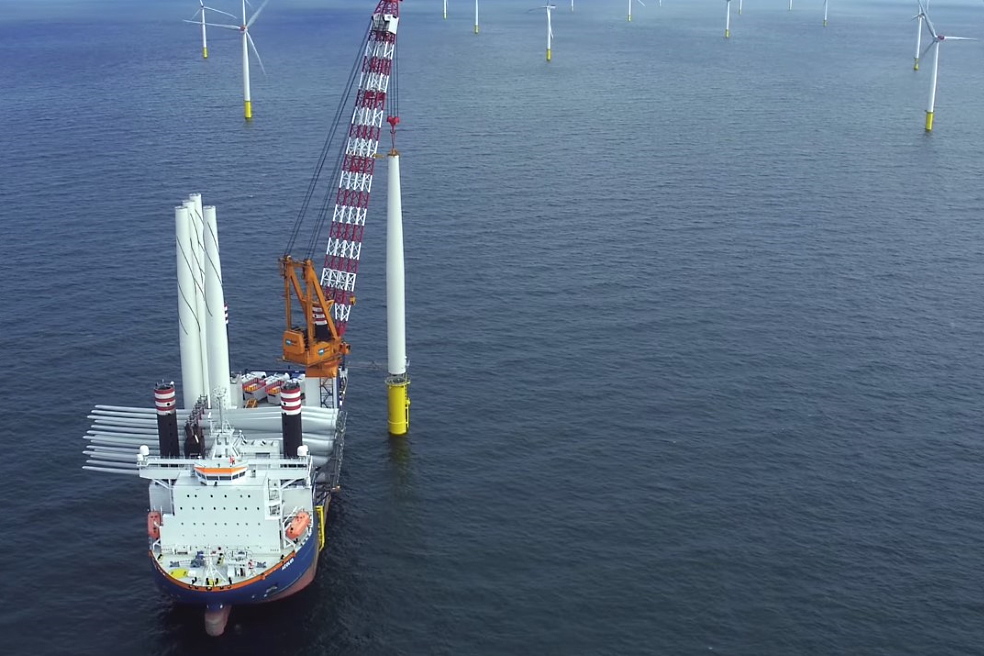
European engineering companies describe typical situation: after the first 10 years of operation of an offshore wind farm, less than 50% of the turbines avoided repairing this element.
The problem is so serious that transmission damage statistically results in the longest turbine downtime. This can be explained not only by the duration of the replacement operation, but also by weather conditions. In some areas of the North Sea, a breakdown in November means that the turbine will not start until April-May.
In addition, the cost of replacing the main gearbox in a 5 megawatt turbine is approximately half a million euros. Transmission damage, including repair costs and downtime, can render the entire wind turbine investment worthless.
Therefore, it is important to prevent malfunctions and monitor the operation of individual wind turbines, as well as to respond quickly to emerging problems.
Monitoring systems help in this.
Thanks to vibration diagnostics, it is possible to find out exactly in which mechanism something undesirable is happening. For this purpose, an appropriate number of vibration sensors (not only in gears, but also in bearings, couplings, shafts) and rotation speed sensors are installed, as well as equipment for detecting system failures.
In order to respond quickly to signals, wind turbine maintenance and repair companies need to have well-equipped vessels ready to move into the designated area at any time. Better to replace bearings that cost several thousand euros than to lose six months of wind turbine operation.
Nowadays, building offshore wind farms is not just about installing turbines and laying cables, but also creating effective repair and maintenance teams to keep the entire system running.
Our team offers project finance and construction of offshore wind farms both in the North Sea and around the world.
Thanks to partnerships with leading universities in Spain, specialists can offer the latest achievements of European science for the most ambitious projects.
Construction of wind farms in the North Sea under the EPC contract
EPC contracts in offshore wind energy are complex and cover a wide range of topics such as financing, tendering, project implementation and performance monitoring.An EPC contractor involved in the construction of offshore wind farms must have the necessary knowledge and experience to serve the customer at all stages of the project.
Services under an EPC contract may include the following:
• Financial calculations.
• Preliminary technical study of the project.
• Comparison of project options in terms of efficiency, potential costs and other parameters.
• Conducting consultations with the customer and stakeholders.
• General and detailed engineering design.
• Holding tenders for the purchase of equipment and materials.
• Rent of ships and equipment for construction at sea.
• Execution of construction and electrical work.
• Testing and commissioning.
• Maintenance and repair.
As we said, the construction of offshore wind farms in the North Sea is a technically challenging process that involves many companies.
This implies a significant amount of work on the preparation of technical documentation, organizing tenders, concluding contracts with small contractors, renting special equipment, obtaining permits, etc.
The best option for most customers is to enter into an EPC contract with a single contractor who will be responsible for all aspects of the project. Since this type of contract shifts all responsibilities to the contractor, the customer can focus on running the core business.
This scheme has proven itself well in the construction of large facilities in industry, infrastructure and energy.
Contact us to learn more about financing and construction of offshore wind farms.



